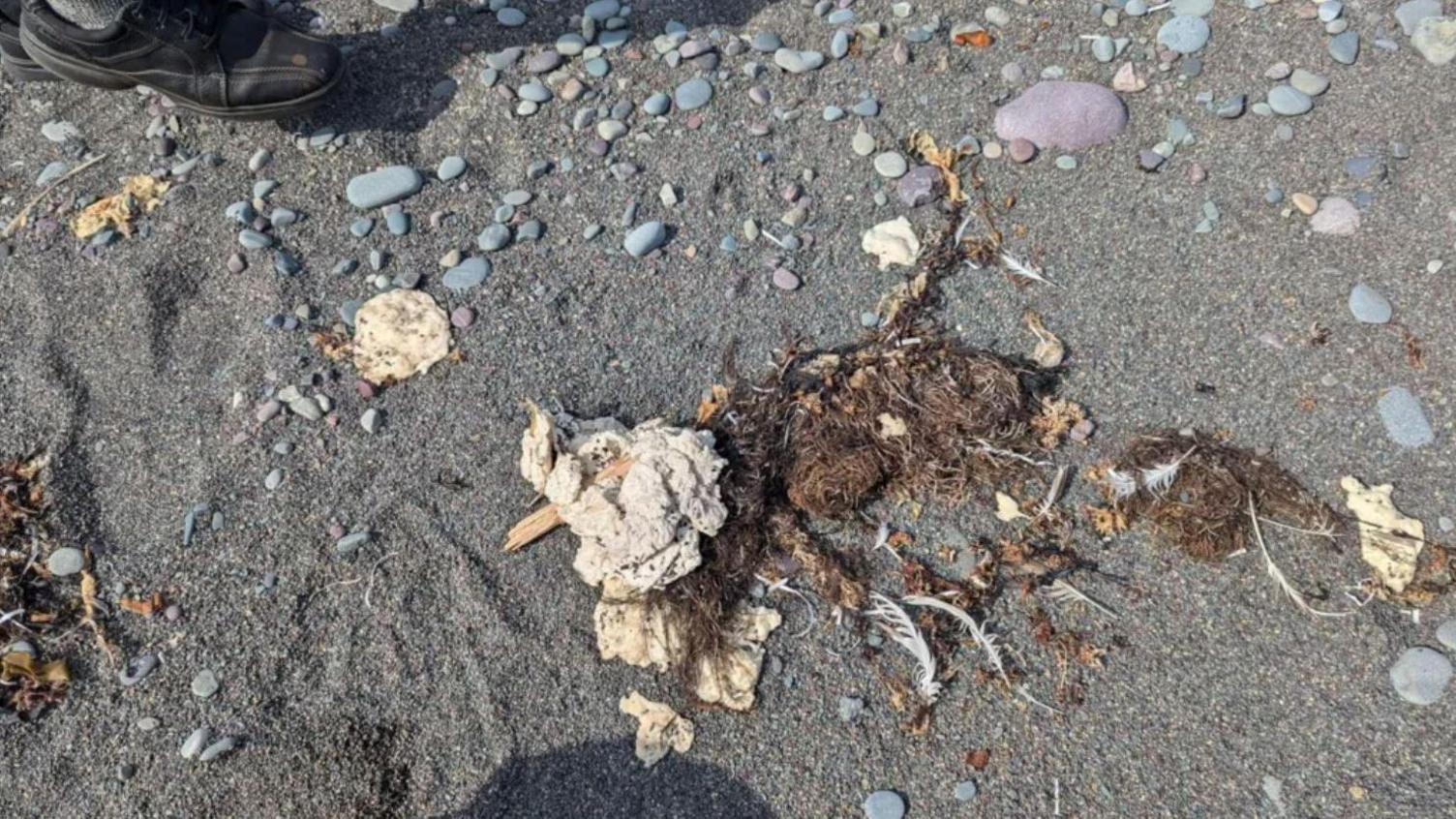Mystery solved behind blobs washing ashore in Canada

- Published
A scientist has identified the mysterious white blobs that have been washing up along the Newfoundland coast.
Canadian officials opened an investigation this autumn as photos of the white substance went viral after being spotted along the shores of Placentia Bay, on Newfoundland's south-east coast.
There was speculation online that the substance - compared by some to dough - might have been a fungus, mould, or wax.
But Memorial University chemistry professor Chris Kozak analysed the substance, and discovered it was manmade and some type of synthetic rubber.
Prof Kozak ran a series of tests with graduate students and dubbed the task "Project Unknown Glob", CBC News reported.
He ultimately found the blobs aren't toxic and are safe to handle, though they do carry a "volatile odour".
He says the substance is probably a butyl rubber PVA composite, most commonly found in adhesives like glue and certain nail polish coatings.
It's still unclear where the blobs originated. Prof Kozak told CBC he reported his findings to the Canadian government, whose researchers have been conducting their own tests.
The “óĻó“«Ć½ has contacted Prof Kozak for more information.
In a statement to the “óĻó“«Ć½ on Friday, Environment Canada said it is aware of Prof Kozak's work but "does not share hypotheses on the identity or origins of a substance undergoing testing, nor is it in a position to validate or substantiate the theories or findings of others".
Stan Tobin, a resident of Ship Cove, a tiny village on the bay, told the “óĻó“«Ć½ the substance was almost doughy - "like someone had tried to bake bread and done a lousy job" - with an odour reminiscent of vegetable oil.
He's since come across "hundreds and hundreds of globs - big globs, little globs", with most about 6in (15cm) wide, he said.
Prof Kozak told the Guardian newspaper āsubstantial amountsā of the substance might be on the bottom of the Atlantic Ocean, and it could be mistaken by marine wildlife for food.
Jessica Murphy contributed reporting.
Related topics
- Published16 October
- Published7 November
- Published31 October